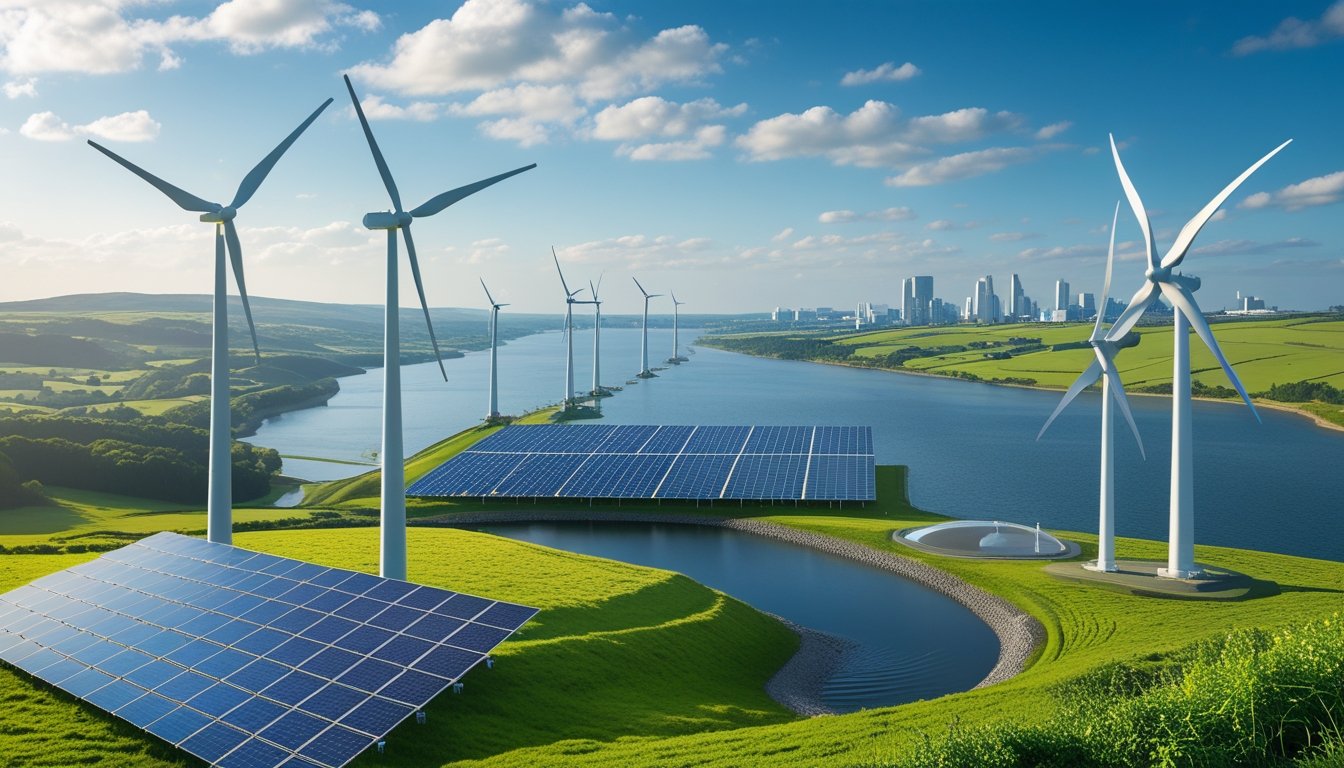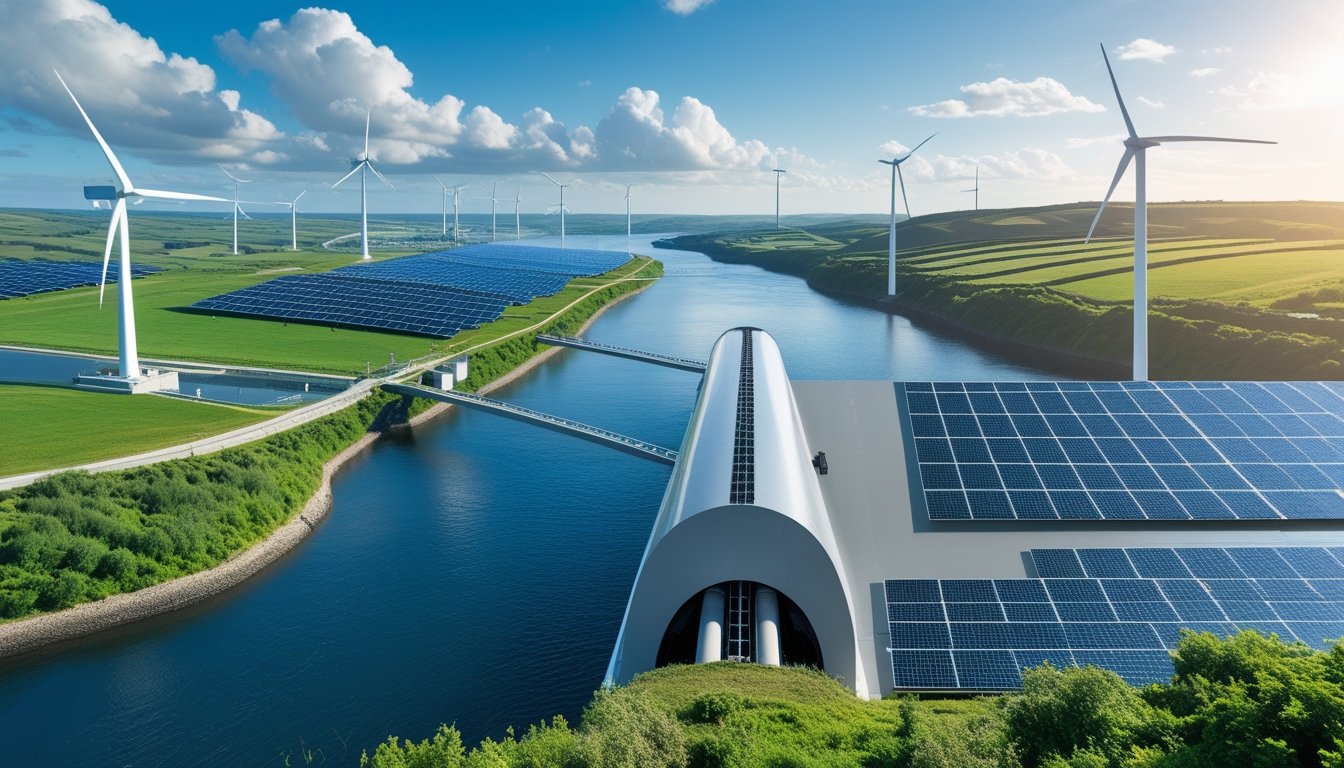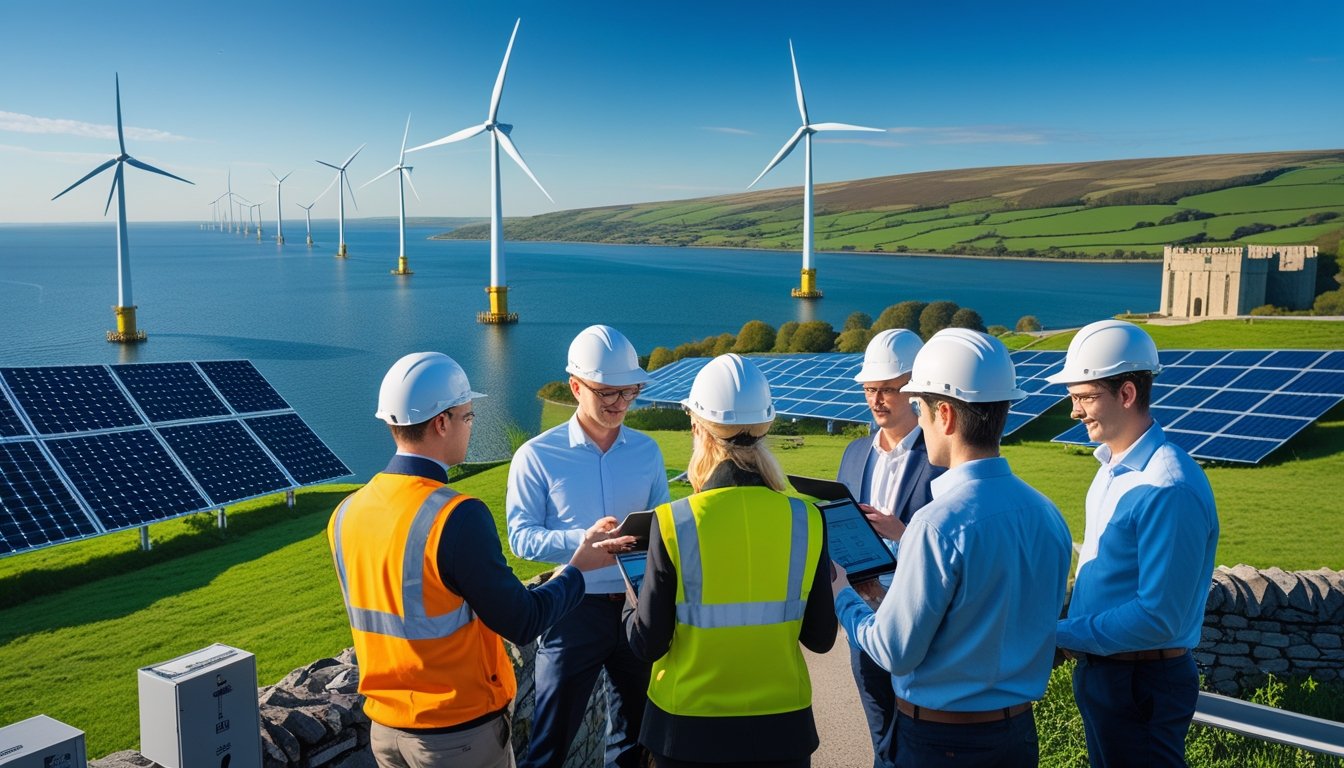Late updated: 12 Aug 2025 15:08
Written by: Eleanor Hartman
The Evolution Of UK Renewable Energy Infrastructure: A Transformative Journey
The evolution of the UK renewable energy infrastructure is nothing short of a strategic and technological marvel. As a nation, the United Kingdom has committed to ambitious net-zero carbon goals, rapidly transforming its energy landscape with investments in smart grids, energy storage solutions, and transmission infrastructure. Prioritising the upgrade of energy infrastructure not only supports the integration of renewables into the national grid but also ensures energy security and efficiency.

With a focus on modernisation, new policies and initiatives have been rolled out to accelerate the transition to greener energy. The introduction of advanced metering infrastructure and battery storage systems is revolutionising how we collect and use data, driving efficiency and innovation. These advancements highlight the urgency of tackling the intermittent nature of renewable sources while positioning the UK as a leader in sustainable energy transformation.
As we reflect on these developments, it becomes evident that securing a sustainable and resilient energy future is pivotal. By balancing technological advances with strategic planning, the UK is setting a robust example for other nations navigating their energy evolution.
Key Takeaways
- The UK is transforming its energy infrastructure to meet net-zero goals.
- Modern initiatives focus on smart grids and energy storage.
- Strategic advancements are vital for a sustainable energy future.
Key Milestones in UK Renewable Energy Infrastructure

Our journey through the evolution of the UK renewable energy infrastructure highlights crucial moments that shaped the industry. Developing policies sparked early growth, with wind energy leading the way in recent years. Meanwhile, solar power and decentralised energy generation have gained significant traction.
Historic Beginnings and Policy Drivers
In the early stages, the UK's renewable energy journey was driven by both necessity and innovation. Environmental agencies like Natural England played pivotal roles, advocating for changes to reduce greenhouse gas emissions. The government introduced support mechanisms to encourage renewable energy development.
From the outset, policies focused on reducing reliance on fossil fuels. They supported initial investments in infrastructure. Wales, for instance, benefited from these initiatives with projects that harnessed local resources to boost electricity generation. As we navigated these beginnings, our commitment to cleaner energy became apparent, setting the groundwork for future successes.
Major Developments in Wind Energy
Onshore and offshore wind energy have been at the forefront of the UK's renewable achievements. The UK has capitalised on its geographical advantages, particularly its vast coastline, to build extensive offshore wind farms. These projects have not only increased our electricity generation capacity but also reduced dependency on traditional fossil fuels.
Significant investments have allowed for technological advancements in turbine design and efficiency. This has made wind energy a cornerstone of the UK's renewable energy mix. Nations across the globe have looked to our wind infrastructure as a model of successful implementation. The benefits prove substantial, both environmentally and economically.
Rise of Solar and Decentralised Power Generation
Solar power has witnessed a remarkable rise, thanks to technological advancements and evolving market conditions. Initially, high costs limited its adoption. However, over time, factors such as the reduction in photovoltaic prices have driven substantial growth. Decentralised power generation has complemented this rise, allowing communities to generate and consume their own energy.
Policy measures and incentives also played a role in encouraging widespread adoption of solar installations. Wales and other regions have embraced solar parks and individual roof installations. Community and urban developments have increasingly adopted distributed energy solutions. These initiatives exemplify how we are meeting our energy needs sustainably.
Modern Infrastructure Trends and Strategic Initiatives
The UK's renewable energy infrastructure is experiencing transformative trends influenced by strategic initiatives. Key developments include substantial grid upgrades, advanced energy storage solutions, and regulatory changes that accelerate the transition to clean energy.
Infrastructure Expansion and Grid Upgrades
Our national grid is undergoing vital expansions to support the increased electricity demand from renewable sources. Grid upgrades are essential for managing the surge in electricity supply. Advanced transmission networks are being deployed to enhance connectivity and efficiency. The integration of modern technologies helps facilitate electricity system operator functions, reducing grid connection issues. Implementing innovative solutions aids in decarbonisation while enhancing the resilience and reliability of GB energy infrastructure.
Crown Estate initiatives further catalyse developments, allowing for strategic expansion of renewable energy generation. These developments align with the Clean Power 2030 Action Plan, ensuring a robust network capable of supporting the UK's net zero strategy.
Energy Storage, Interconnectors, and Green Hydrogen
Emerging energy storage technologies and interconnectors play a pivotal role in balancing our electricity system. Interconnectors enable cross-border electricity flow, optimising resource use and maintaining equilibrium between electricity supply and demand. Energy storage solutions, such as battery systems, are deployed to manage surplus energy and ensure consistent, reliable distribution.
Green hydrogen offers significant potential, acting as a carbon-free alternative in electricity generation while reducing reliance on fossil fuels. The interplay of carbon capture and storage (CCUS) and hydrogen technologies presents a cohesive path towards achieving clean energy goals. Collectively, these advancements secure our energy supply and bolster the net zero transition.
Regulatory and Organisational Role in Energy Transition
Regulatory frameworks and government initiatives define the pace and direction of energy transitions. The Labour government has spearheaded several policies, prioritising clean energy. Strategic decisions by the Secretary of State and collaborations with energy stakeholders accelerate the electrification process.
The formulation and execution of policies pertinent to renewable energy infrastructure are critical. These initiatives support the development of a sustainable and efficient energy ecosystem. This regulatory commitment is integral in overcoming barriers and driving the UK towards a resilient future, aligned with the objectives of the net zero strategy. Our holistic approach ensures optimal use of resources and facilitates rapid renewable energy integration.
Frequently Asked Questions

We're delving into specifics about UK renewable energy targets, current statistics, infrastructure leaders, future forecasts, and consumption metrics, elucidating the evolving landscape of the nation's renewable energy.
What are the UK's renewable energy targets for the year 2030?
The UK aims to generate 70-80% of its electricity from renewable sources by 2030. This ambition is in line with the country's commitment to reducing carbon emissions and supporting a sustainable energy future. Increasing wind and solar energy capacity forms a core part of this target.
What is the current statistical data on the UK's renewable energy production and capacity?
As of 2025, renewable energy makes up a significant part of the UK's energy supply portfolio. Solar and wind power have shown consistent growth, with a substantial increase in their installed capacity. This reflects the national move towards cleaner energy solutions, driven by a combination of policy support and technological advancement.
How has the percentage of renewable energy in the UK's overall energy mix changed by 2025?
By 2025, renewable energy sources account for roughly 45% of the UK's total energy mix. This is a marked increase from the early 2000s, thanks to sustained government investment and public support for green energy initiatives. Such a shift has been essential in reducing reliance on fossil fuels.
Which companies are leading the development of renewable energy infrastructure in the UK?
We see prominent companies like SSE, Ørsted, and ScottishPower paving the way in renewable infrastructure. These organisations are at the forefront of wind and solar power projects, investing heavily in innovation and capacity expansion to ensure a sustainable and robust energy supply.
What does the forecast of the UK's energy mix look like for the year 2025?
For 2025, the UK's energy mix is expected to be dominated by renewable and low-carbon sources. Wind and solar energy are set to comprise a majority portion, with offshore wind playing a pivotal role. The transition supports the nation’s goals of carbon neutrality and energy independence.
What is the estimated daily consumption of electricity in gigawatts within the UK?
The UK’s daily electricity consumption is estimated around 750-850 gigawatt-hours. This figure, subject to seasonal and economic variations, underscores the continuing demand for energy-efficient practices and the need for sustainable energy sources to meet the needs of residential and industrial users.